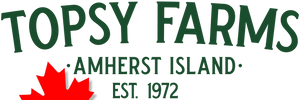The Wool Shed is open during March Break daily from 10-4
Recording or Keeping track of who’s who
Posted on
In the “good old days”, we had a card for each ewe in the flock, recording the number of lambs she’d had all her breeding years. It involved a lot of labour and trying hard to minimize human error while completing the card information during long tiring lambing days.
We used to lamb using the barns to shelter each small family for a few days in individual pens, enabling us to check udders and the wellbeing of each lamb. Two day-old healthy lambs would get an ear tag and tail elastic (and the males would have testicles ringed). The mamas would hopefully have their metal tag from birth, and would get more ear jewellery, a plastic coloured tag in the other ear. (The earlier plastic tags were very breakable, later replaced by others that didn’t self destruct as frequently.) All tags have an alphabetic or colour code identifying year, and a numeric series identifying each individual. Twins or triplets would also have a (washable) colour paint brand that matched their dam’s, so accidental runaways who got lost could be returned home. Recording that data was a part of the daily job.
Christopher can remember long days in the chutes when the animals were older, trying to read the information off the tag, wearing a lamp headset to try to see well worn numbers, licking his thumb to try to wash off enough mud/manure to read the data. One cold person would wait at a table, sorting through the card file to read off that ewe’s history. (That’s if the card could be found.) Others kept the sheep flowing through.
Times change.
Christopher successfully applied to be part of a government of Canada Pilot Project testing electronic ear tags RFID or EID (Radio Frequency Identification, or Electronic I.D.). We also received help to purchase the wand that reads the data.

A poor quality picture (sorry) but showing Christopher checking an udder, Jacob reading wand, and Ian seeking data on the computer.
The pictures were taken in early December, showing Ian on computer and Jacob and Christopher working the chutes.
No more card files, keeping lamb records.
No more licking unspeakably dirty thumbs. This process, while by no means foolproof, is much faster and easier to use, and probably more accurate for recording data. While in the chutes, each ewe is checked for any lumps or abnormalities in her udder, signs of ill health or poor teeth that might indicate a difficulty in raising lambs next season. The wand reading is called out, the computer equivalent found and cross-checked by reading the number in the other ear. The data is entered. Glitches happen, errors occur, tags go missing. But it is a big improvement.

Clear numbers on the wand. The ewe is keeping an eye on Jake.
We have been pasture-lambing for awhile, not using the barns, so we no longer know how many lambs each ewe has birthed. That is a regrettable loss of data, but the ease of this system recommends it.
The goal, as always, is to produce healthy happy sheep and lambs for great wool for our online store and Wool Shed, and for our custom lamb sales.
And knowing who’s who? Any great shepherd really does know his flock and the individuals in it.

Jacob and the ewe, communing. Ewes waiting to exit in background.
Customer Care
About Topsy Farms
Contact us
14775 Front Road Stella, ON, K0H 2S0
(613)-389-3444 x1
1(888)-287-3157 toll-free
info@topsyfarms.com

Leave a comment: